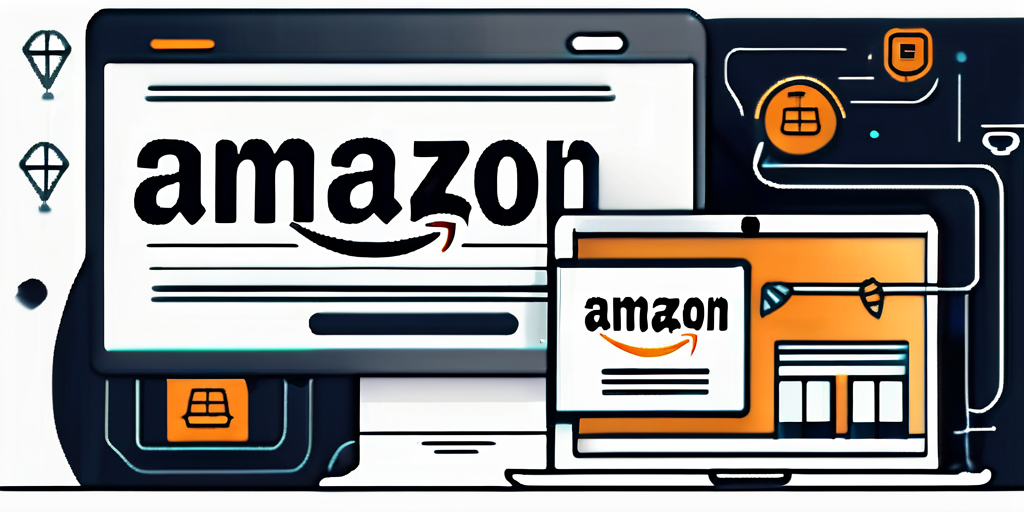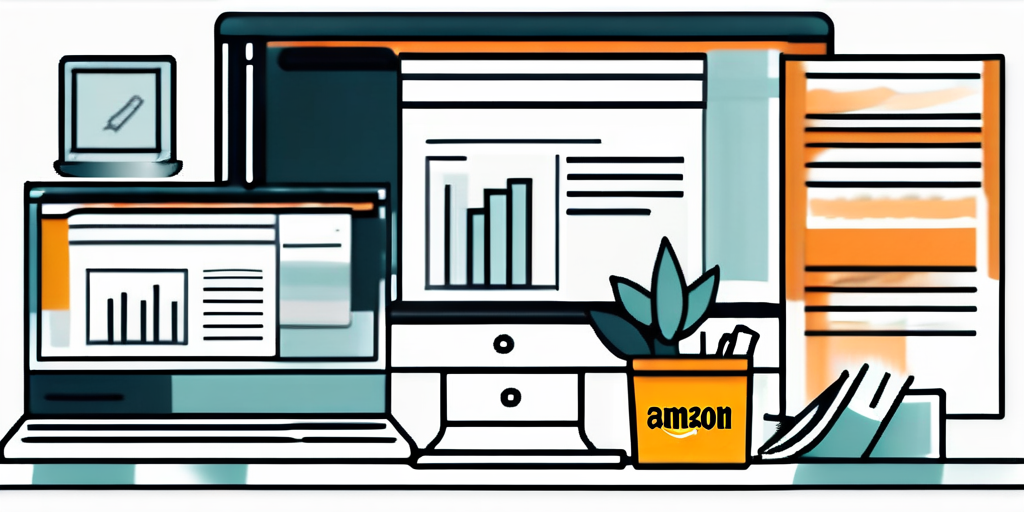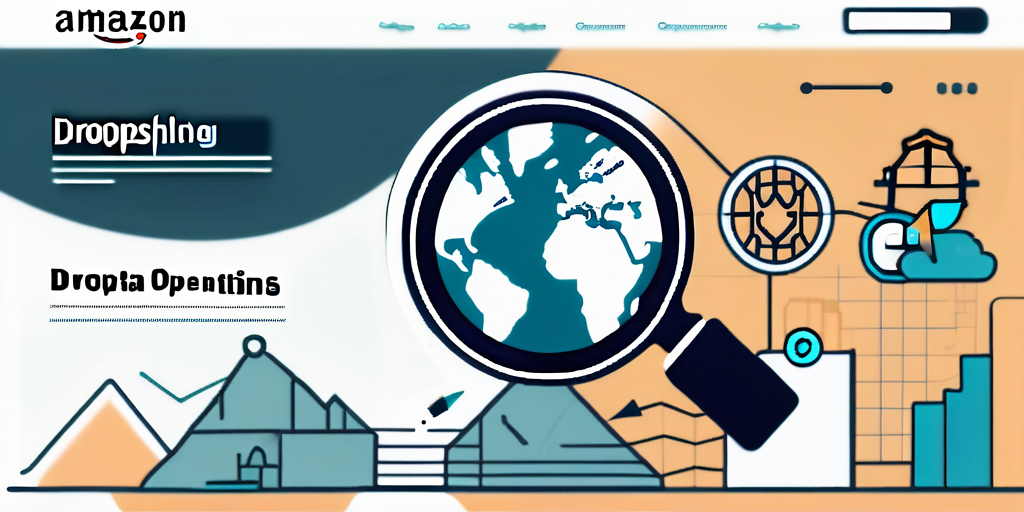Amazon dropshipping is a popular business model that allows entrepreneurs to sell products on Amazon without needing to hold inventory. It offers a convenient way to start an e-commerce business with low upfront costs and minimal risk. In this ultimate guide, we will walk you through the ins and outs of Amazon dropshipping, from understanding its definition to maximizing your operations for success.
Understanding Amazon Dropshipping
Defining Amazon Dropshipping
Amazon dropshipping is a fulfillment method where sellers list products on Amazon’s marketplace, but instead of shipping the products themselves, they rely on third-party suppliers to directly send the products to the customers. Essentially, dropshippers act as middlemen, connecting customers with suppliers.

The Role of Amazon in Dropshipping
Amazon plays a crucial role in the dropshipping process. As the largest online marketplace, Amazon provides an extensive customer base, robust infrastructure, and trusted reputation. It handles customer orders, payment processing, and even customer service, leaving the dropshipper to focus on marketing and sales.
Benefits of Amazon Dropshipping
There are several benefits to choosing Amazon as your dropshipping platform:
- Low startup costs: With Amazon dropshipping, you don’t need to invest heavily in inventory upfront. This eliminates the risk of holding excess stock.
- Wide product selection: Amazon offers a vast range of products, allowing you to choose niches that align with your interests and target audience.
- Efficient order fulfillment: By leveraging Amazon’s infrastructure, you can benefit from faster and more reliable order processing and shipping.
- Access to Prime customers: Dropshippers can tap into Amazon Prime’s loyal customer base, who often prioritize products eligible for Prime shipping.
Moreover, Amazon dropshipping provides an opportunity for sellers to expand their reach globally. With Amazon’s international marketplaces, you can easily list your products in multiple countries, reaching a wider audience and potentially increasing your sales.
In addition, Amazon’s advanced analytics and data-driven insights can help dropshippers make informed decisions about their product selection, pricing strategies, and marketing campaigns. By analyzing customer behavior, trends, and competitor data, sellers can optimize their listings and maximize their chances of success.
Furthermore, Amazon’s fulfillment network, known as Fulfillment by Amazon (FBA), offers dropshippers the option to store their inventory in Amazon’s warehouses. This means that Amazon takes care of the storage, packaging, and shipping of the products, allowing sellers to focus on growing their business without the hassle of logistics.
Lastly, Amazon’s reputation as a trusted and reliable marketplace can instill confidence in customers, increasing the likelihood of sales. Many customers prefer to shop on Amazon due to its buyer protection policies, customer reviews, and overall seamless shopping experience.
Setting Up Your Amazon Dropshipping Business
Starting an Amazon dropshipping business can be a lucrative venture, but it requires careful planning and strategic decision-making. In this guide, we will delve deeper into the essential steps you need to take to ensure your success in the competitive world of e-commerce.
Choosing the Right Products
One of the most crucial aspects of setting up your Amazon dropshipping business is selecting the right products to sell. It’s not just about picking any random item; you need to focus on items with high demand, low competition, and a healthy profit margin. To do this, it’s important to conduct thorough market research.
Start by exploring popular categories on Amazon and identifying the products that consistently rank high in sales. Analyze customer reviews to understand what features or qualities customers value the most. This will help you narrow down your options and find products that have the potential to generate significant sales.
Additionally, consider utilizing tools like Jungle Scout or Helium 10 to identify lucrative opportunities. These tools provide valuable insights into product demand, competition, and pricing trends, giving you a competitive edge in the market.
Finding Reliable Suppliers
Securing reliable suppliers is another crucial factor in the success of your dropshipping business. After all, your reputation as a seller depends on the quality of the products you offer and the reliability of your suppliers.
When searching for suppliers, look for those who offer competitive prices, prompt shipping, and high-quality products. Platforms like AliExpress and SaleHoo can be excellent resources for finding trustworthy suppliers. These platforms provide a wide range of products from various manufacturers, allowing you to choose the ones that best fit your business needs.
Alternatively, you can also consider directly contacting manufacturers to establish partnerships. This approach can give you more control over the quality and pricing of your products, as well as the opportunity to negotiate better terms.
Creating a Competitive Pricing Strategy
Pricing your products competitively is crucial to attract Amazon shoppers and stand out from the competition. When determining your pricing strategy, it’s important to consider various factors.
First, calculate the cost of the product itself, including any fees associated with sourcing it from your supplier. Next, factor in shipping fees, packaging costs, and any other expenses related to fulfilling orders. It’s essential to set prices that allow for a reasonable profit while remaining attractive compared to similar offerings on Amazon.
Keep in mind that pricing is not a one-time decision. Continuously monitor market trends, adjust your prices accordingly, and stay updated on your competitors’ pricing strategies. This will help you maintain a competitive edge and maximize your profitability.
By following these steps and putting in the necessary effort and research, you can set up a successful Amazon dropshipping business. Remember, success in this field requires ongoing dedication, adaptability, and a commitment to providing exceptional customer service. Good luck!
Navigating Amazon’s Policies and Regulations
Understanding Amazon’s Seller Policies
Before diving into Amazon dropshipping, familiarize yourself with the platform’s seller policies. Amazon has specific guidelines on product listings, customer communication, and fulfillment. Ensure compliance to maintain a healthy seller account and prevent potential penalties or account suspensions.

When it comes to product listings, Amazon requires sellers to provide accurate and detailed information about their products. This includes clear and concise product titles, informative bullet points, and high-quality images. By adhering to these guidelines, you can enhance the visibility and credibility of your listings, increasing the chances of attracting potential customers.
Moreover, customer communication is a crucial aspect of selling on Amazon. Promptly responding to customer inquiries and addressing any concerns or issues is essential for maintaining a positive reputation. Amazon values excellent customer service, and by providing timely and helpful responses, you can build trust and loyalty among your customers.
Complying with Dropshipping Regulations
In addition to Amazon’s policies, dropshippers must also be aware of general dropshipping regulations. Some suppliers may have restrictions on dropshipping their products, while others may require specific agreements or conditions. It’s vital to establish a clear understanding with your suppliers and communicate transparently with customers.
When selecting suppliers for your dropshipping business, consider their reputation, reliability, and the quality of their products. Conduct thorough research and read reviews to ensure that you are partnering with trustworthy suppliers who can meet your customers’ expectations. Building strong relationships with your suppliers is key to ensuring smooth operations and minimizing any potential issues that may arise.
Additionally, it is essential to have a solid understanding of the legal aspects of dropshipping. Familiarize yourself with consumer protection laws, intellectual property rights, and any other relevant regulations in your target market. By staying informed and compliant, you can protect your business and provide a secure shopping experience for your customers.
Handling Returns and Refunds
As a dropshipper, you need to have a plan in place for handling returns and refunds. Amazon has its own return policies, but it’s essential to establish clear communication with your suppliers to facilitate the returns process smoothly. Providing excellent customer service and promptly addressing any issues will help maintain customer satisfaction.
When it comes to returns, it’s crucial to have a well-defined policy in place. Clearly communicate your return process to customers, including any specific requirements or conditions. This transparency will help manage customer expectations and minimize any potential misunderstandings or disputes.
Furthermore, consider implementing a quality control system to reduce the likelihood of returns due to product defects or inaccuracies. Regularly inspecting the products before shipping them to customers can help ensure that they meet the expected standards of quality and accuracy.
Remember, handling returns and refunds professionally and efficiently is an opportunity to showcase your commitment to customer satisfaction. By going above and beyond to resolve any issues, you can turn a potentially negative experience into a positive one, fostering customer loyalty and generating positive reviews for your business.
Optimizing Your Amazon Dropshipping Operations
Improving Product Listings for SEO
Optimizing your product listings for search engine optimization (SEO) can significantly impact your visibility on Amazon. Conduct keyword research to identify relevant and high-volume search terms. Incorporate these keywords prudently in your product title, bullet points, description, and backend keywords section to improve your ranking in Amazon’s search results.

Managing Inventory Effectively
Proper inventory management is crucial in avoiding stockouts or overselling. Utilize inventory management software or Amazon’s built-in tools to track your stock levels, set reorder points, and receive alerts when inventory is running low. Regularly monitor your inventory performance to ensure your products are always available to customers.
Providing Excellent Customer Service
Customer satisfaction is vital in building a reputable dropshipping business. Respond promptly to customer inquiries or concerns and address any issues professionally and efficiently. Aim to exceed customer expectations by offering fast and reliable shipping, providing accurate product information, and resolving any problems promptly.
By following this ultimate guide, you now have a comprehensive understanding of Amazon dropshipping. Start by understanding the concept, set up your business, navigate policies and regulations, and optimize your operations to maximize your chances of success. The world of Amazon dropshipping awaits you, and now you have the knowledge to embark on this exciting e-commerce journey. Happy dropshipping!

